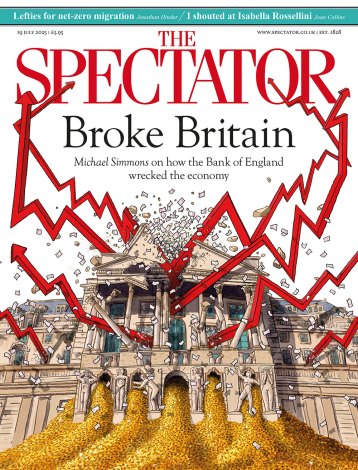On 18 May 1781, Tupac Amaru II’s rebellion came to an abrupt and grisly end. Seized by Spanish forces, the Peruvian muleteer-turned-popular-revolutionary knew the game was up. Still, he refused to go quietly. After Tupac’s captors’ horses failed to wrench off his limbs, the executioner reached for his axe. ‘You kill only me,’ legend has Tupac shouting as the blade descended. ‘But tomorrow I will return as millions.’
As Laurence Blair’s Patria assiduously demonstrates, death rarely has the last word in the ‘forgotten continent’ of South America. In the case of Tupac, his narrative of a ‘Peru for Peruvians’, free from colonial oppression, would later be resurrected in radical leftist movements from Uruguay to Venezuela. Even the Black Panthers in 1960s New York managed to shoehorn a space for him – cue the rapper ‘2Pac’.
Bolivia continues to maintain a navy in the expectation of one day regaining its route to the Pacific
Search for stories of native heroes in the official record, however, and they are difficult to find. If names such as Tupac, Zumbi or Marshal Lopez resonate at all, they do so as passing factoids, dredged up to win a pub quiz but otherwise blotted out. With the passion of a convinced revisionist, Blair, a British journalist based in South America, sets out to ‘defamaliarise us from what we know’, and in the process reveal the contemporary resonance of the region’s ‘crushed alternatives’.
He dismisses the lazy trope that South American history ‘begins and ends with the Incas’, and the first rabbit hole he dives into belongs to the Chincha. An affluent coastal civilisation once located in southern Peru, this ancient maritime kingdom was said to count some 100,000 ocean vessels at its peak in the early 16th century. The secret of its success was simple: guano. The Chincha had worked out that the gulls’ droppings coating the rocky islands off the coast were a perfect fertiliser.
Three centuries after the Chincha’s demise, word of the miracle muck spread. Between 1840 and 1880, 13 million tons of Peru’s white gold were shipped overseas. Presiding over one of the world’s ‘first global commodity rushes’ was a Brit called William Gibbs – proof that South America’s colonial story is not, as often presented, an exclusively Iberian affair. Today, a small group of Peruvian naturalists serve as the ‘spiritual inheritors’ of the Chincha, who held the islands sacred. Now it is dynamite-wielding fishermen rather than spade-carrying colonialists who are threatening the area’s seabirds, but the fight is just the same.
Patria introduces eight other similar ‘lost countries’. It makes for a varied list, ranging from a kingdom of escaped slaves in north-eastern Brazil to an ‘African army’ who fought against the Spanish on the promise of a ‘United States of South America’, via a guerrilla force of Incan warriors deep within the Peruvian jungle. In each case, Blair maintains, their stories live on just below the surface, ‘like bones pressing against skin’.
The Mapuche in Chile exemplify his point. In 1641, their warlike ways persuaded Spain to offer them a treaty of ‘perpetual peace’ – a diplomatic move that continues to inspire their descendants’ fight for their ancient territorial rights. Bolivia, a country whose very name is anchored in the continent’s fight for freedom (christened, as it is, after the ‘Great Liberator’, Simon Bolivar), is similarly illustrative. Landlocked since Chile occupied its coastal access in 1879, this nation continues with the upkeep of a navy in the expectation of one day regaining its route to the Pacific.
Yet Patria’s premise of ‘crushed alternatives’ needs to be treated with care, since nothing in history is preordained. Yes, Paraguay may have had a tinpot dictator in the 1860s who aspired to turn his country into a regional superpower, but to posit this as a realistic path is clearly misleading. The dream collapsed with a disastrous six-year war (1864-70) against Argentina, Brazil and Uruguay which left as many as nine in ten of Paraguay’s fighting-age men dead. But the end could just as easily come via a military coup, a Marxist revolution or a mafioso-style bout of casino capitalism – Latin America has tried them all.
To his credit, Blair is no political ideologue or historical determinist, avoiding macro-narratives such as Eduardo Galeano’s Open Veins of Latin America thesis of resource-led exploitation. But that leaves him with a challenge: how to glue together what can otherwise feel like disparate individual narratives. The answer proffered is the link between past and present, though here Patria fights shy of providing any connecting theory or binding conclusions. Official histories may be written by the winners, but alternative histories are not authorless. So who (other than Blair) is giving these stories rebirth, and to what end?
That said, an exciting investigation is currently under way into how Latin American history is interpreted and understood – something this book brings to the fore. A work of scholarship in its own right (the endnotes alone run to 70 pages), Patria also has a descriptive flair that lifts Blair’s stories off the page. Best of all, it introduces us to the myriad voices within South America that are retelling their own past and, in so doing, nudging Tupac’s millions to wakefulness.






Comments